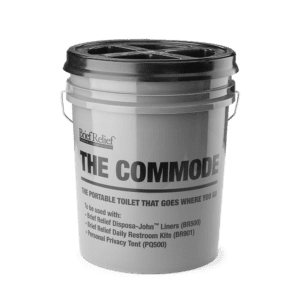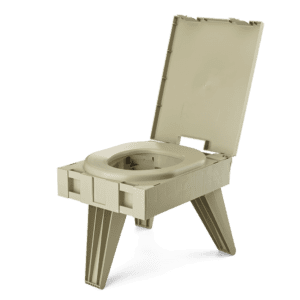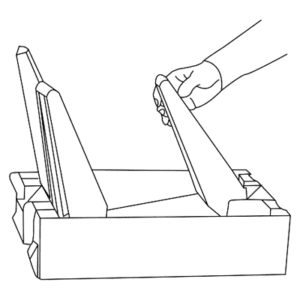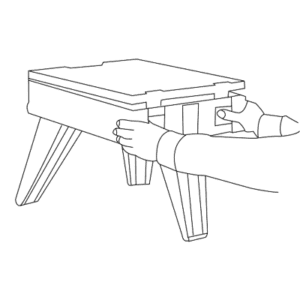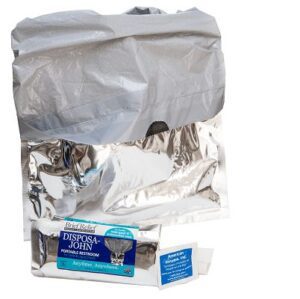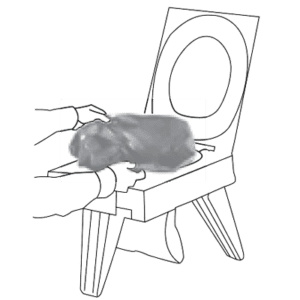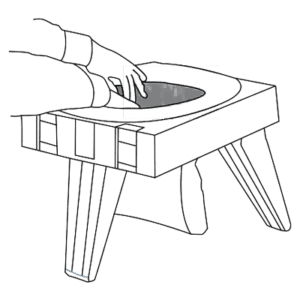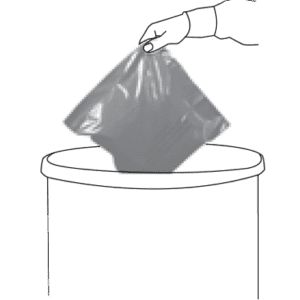Latest News

As of summer 2022, the average cost nationwide for a gallon of diesel fuel is $5.28—$2 higher than this time last year. In some states, like California, the price hike is even higher, with diesel prices reaching an average of $6.40 a gallon.
For owner-operators and others who foot the bill, this equates to $600 more spent every time a driver fills up, assuming 300-gallon fuel tanks. (We’ll let you do the math and multiply that by the number of trucks in your fleet…)
We understand that cutting costs is top priority these days. Here’s a roundup of practical ways fleets can reduce fuel costs and combat rising fuel prices.
Optimize Routes
Improving your drivers’ routes can reduce time spent in traffic, stops at stoplights, and miles driven—all of which conserve fuel.
One of the best (and perhaps obvious) ways to optimize routes is by using a GPS vehicle tracking solution. They’ve proven to help fleets reduce fuel costs by up to 25% and total miles driven by up to 10%.
Plus, depending on the tracking system, some allow you to track how much fuel each truck uses in gallons or dollars, as well as coach drivers or recommend engine tune-ups.
Reduce Out-of-the-Way Stops
When nature calls, it doesn’t check for optimal stopping points first. Depending on your truck drivers’ routes, finding a convenient place for bathroom breaks can be a challenge.
Instead of driving miles out of the way or sitting uncomfortably until the next on-route stop, drivers can find comfortable, convenient relief by using the Brief Relief portable Briefcase Commode. It’s compact, easy to store, and quick to set up.
Paired with the Brief Relief Privacy Shelter, the Briefcase Commode allows truck drivers to “take care of business,” no matter where your company’s business may take them.
Keep an Eye on Tire Pressure
When not properly inflated, tires flex more under load. This produces heat and increases rolling resistance. (We didn’t say it—the US Environmental Protection Agency did!) Also according to the EPA, for every 10 pounds per square inch (PSI) below the recommended air pressure level, underinflated tires reduce truck fuel economy up to 1%.
In layman’s terms: your fleets are wasting fuel with underinflated tires.
The solution? Install tire maintenance management systems to ensure drivers and maintenance personnel check tire pressure frequently. (Doing this electronically and automating it makes things even easier).
Watch the A/C
In addition to record gas prices, record heat is in the books for this summer. That means increased A/C usage.
While fuel consumption in semi trucks using A/C hasn’t been widely studied, it’s known that in cars, A/C can increase fuel consumption up to 20% due to the extra load on the engine.
Rolling the windows down and using portable fans can only help so much. A cooling towel like Heat Relief gives drivers an additional way to beat the heat. They’re lightweight, versatile, and use the latest hyper-evaporative technology that allows wearers to find reprieve from hot weather while on the go.
Cut Down on Idling
Leaving a truck idling leads to a whole slew of problems.
For starters, when a truck idles, it burns through a gallon of fuel an hour—all while covering no distance. This decreases overall fuel economy by 1%. Translation: Profit loss.
Idling also accelerates engine wear and tear (as seen by warranties applying to “hours operated” instead of “miles traveled.”) Translation: Unnecessary maintenance costs.
And to put the cherry on top, rest-period idling results in emission of about 11 million tons of carbon dioxide, 55,000 tons of nitrogen oxides, and 400 tons of particulate matter annually. And that’s just in the United States alone. Translation: Environmental costs.
While there’s no standard solution to reduce truck idling, here are a couple that could work for you.
Introduce a company-wide policy change, using a fleet management system that logs idle time and notifies drivers of when they’re reaching the recommended limit.
Or install Automatic Engine Start/Stop (AESS) systems on your fleet. As the name suggests, they can automatically stop a truck’s engine if it’s left unattended for a certain period of time.
The Ultimate Key to Reducing Fuel Costs? Be Mindful and Proactive
Unfortunately, you can’t stop rising fuel prices, nor can you abruptly halt trucking operations. But you can intentionally decide which measures to take to save on fuel this summer—and going forward.
We covered just a handful of ways to reduce fuel costs. But what’s the best way? Whatever works for your drivers and fleets and you can stay accountable to. (After all, there’s no use installing the latest technology, only for it to collect “dust” on the dashboard, going largely unnoticed after the novelty wears off…)
Start with one method. When your drivers have mastered it, move onto the next.
Baby steps and consistency will get you to where you want to be: less overhead, more profits.
At Brief Relief, we’re in the business of offering comfort and relief for all mobile workers—whether that’s providing privacy through our travel lavatory systems or a respite from heat through our cooling towels. Contact us today to learn more about our suite of products and how we can serve your team.

Public Relations problems arise from actual problems.
That’s right. PR crises often surface when there’s something fundamentally wrong within your business that’s brushed under the rug or ignored. And until that something’s addressed, you’ve got a ticking time bomb on your hands.
Tick, Tick…
But what if we said utilities companies can drastically reduce the number of PR nightmares they have for indecent exposure, workplace accidents, or other mishaps?
(Yes, workplace mishaps are actually something to worry about. Take the city of Boston, for example. It has suffered numerous fatalities in the past 18 months. And when workplace accidents aren’t handled properly, families dig for answers.)
Luckily, avoiding PR disasters isn’t a pipe dream. It just requires being proactive before sh!t hits the fan.
Here’s how.
Ensure workplace safety
Electrocutions, falls, environmental stress, and fires are some of the most common workplace risks and hazards in the utility industry.
While yes, some incidents are beyond manager control, doing everything you can as a company to ensure workplace safety will lessen your chances of enduring a public relations disaster.
Some measures you can take today are:
- Properly outfit your workers for the type of work they do, including things like reflective gear
- Take steps to prevent falls (i.e. proper ladder training, fall protection systems)
- Pay attention to the weather
- Put procedures in place to prevent electrocution
- Encourage employees to report workplace hazards as they see them
And who knows? You could wind up on the list of America’s Safest Companies and win an award, just like Rosendin Electric did last year.
Create a crisis communication plan
No matter what industry you work in, having a crisis communications plan smoothes out PR disasters before they escalate.
Include the following at a bare minimum:
- Explicit instructions for each department’s roles in case of a crisis
- Contact information for PR spokespeople
- Customizable response template for press releases
- Social media action plan
To address the most important elements, work through these essential steps to create a crisis communications plan.
Monitor social channels in real-time
Having an employee in a branded work vest caught on camera relieving themselves and getting it splayed all over the internet is a major PR concern. And one that’s got substance with the prevalence of phone cameras.
It seems like every other day someone gets caught breaking indecent exposure laws.
Here is a news article about the Hays County commissioner getting caught on camera urinating in a parking lot in February. Here is another story about an unidentified man urinating on a church in April, and here’s another instance of a Zamboni driver getting sacked for public urination the same month.
In the case of your utility company, what can you do if an employee is filmed answering nature’s call in public?
Act quickly!
Make sure your social team monitors, reviews, and follows activity across your social media channels, including mentions of your brand. To save time, they can even use social listening tools like Hootsuite, Sprout Social, or Agorapulse.
While it won’t undo what’s already been done, you can at least staunch the wound a bit.
Better yet, provide easy access to portable bathrooms
Don’t risk your employees getting caught on camera—or worse, blown up on social media. Look for a portable toilet solution that protects your reputation, time, and wallet.
Look no further than Brief Relief!
The Brief Relief Lavatory System comes with a privacy shelter, commode, full-sized seat, and supply of Disposa-John waste bags. It’s a complete personal bathroom at any worksite.
Set-up is simple and optimized for ultimate privacy.
Once the privacy shelter is set up, all workers have to do is place the commode inside and line it with a Disposa-John waste bag. When they’ve finished their business, they simply toss the bag away in the nearest waste bin. Disposa-Johns are odorless, and compounds within the bag convert liquids to solids (meaning they’re spill-proof, as well). Plus, they’re water-repellant, non-conductive, and fire retardant, meeting CPAI-84 standards.
No more close calls with indecent exposures. No more sanitation concerns with smelly porta-potties. No more workers holding it in until they can find a place to relieve themselves. (True story.)
Sound like your cup of tea? To see the complete line of Brief Relief products for your workers, visit our shop.

As an operations manager, you deal with a lot of crap. Reporting to insistent higher-ups, keeping your team productive, resolving conflicts between departments. It’s enough to wipe anyone out. So, we totally get that looking for a Porta Potty alternative for your remote teams may not be high on your list.
But did you know the restroom choices you make not only affects employee health, but also their morale and your company’s bottom line?
Choose well, and your team won’t cringe at what’s available for their use when nature calls. Choose poorly, and you could put their health at risk, land some hefty fines for breaking OSHA regulations, and smear your public reputation. Not to mention the amount of extra work and time that goes into coordinating emptying Porta Potties.
Decisions, decisions.
If Porta Potties and other chemical toilet options are starting to become a real stink for your remote teams, don’t worry. We have just the solution for you. They’re called Brief Relief commodes.
Here’s why they’re the best way to go! (You’re welcome in advance.)
The 411 on Brief Relief Commodes
In a nutshell, Brief Relief commodes are sturdy, portable, lightweight solid waste disposal solutions. They come in two types:
- Brief Relief Commode. This commode is made to the height of a standard toilet seat and comes with a gamma lid.
- Briefcase Commode. This option collapses into a briefcase-sized box that weighs just seven pounds and can be set up in seconds. (When you gotta go, you gotta go!)
When used with a pop-up privacy tent and Disposa-John portable restroom bags, our commodes are some of the most versatile portable toilet solutions you can buy. (We can’t make that sh!t up. Really, check it out for yourself.)
Why Our Commodes Smoke the Porta Potty
For users, Brief Relief commodes’ attractiveness comes from their size, cleanliness, and easy solid waste disposal. (Plus, they won’t have to hold their nose going in.)
For operations managers, the benefits are plentiful:
They Can Be Used Anywhere
To maintain OSHA compliance, companies must provide readily available access to restroom services (i.e. employees can reach them in less than 10 minutes).
While Porta Potties are a viable on-site, portable restroom option, they don’t provide instant bathroom access. (Think about it. The 4-foot by 4-foot rectangular box is only functional when placed on even ground.)
Brief Relief Commodes? They’re extremely versatile AND play by OSHA’s rules.
They’re light and small enough to transport in a crew’s vehicle, and they’re designed for sturdiness on the most uneven terrain. The Briefcase Commode also transforms from a convenient carrying case to fully functional outdoor restroom in a few seconds.
Don’t believe us?
Here are its specific set-up instructions:
1. Pull out each leg until it snaps into place.
2. Press thumb tabs to remove the lid.
3. Unfold the foil bag.
4. Set foil bag inside the commode and unfold the waste bag.
5. The seat holds the waste bag in place. Alternatively, the waste bag can cover the seat to keep the seat clean.
6. After use, lift the bag with the attached draw straps. Holding the straps together, slide the liner closed and tie straps. Tuck the liner inside the foil bag and firmly seal the zip-top.
7. Throw away the used foil bag in any trash. (Unlike most chemical toilets and Porta Potties, Brief Relief’s solid waste disposal bags are landfill safe.)
They’re the Most Sanitary Option
In response to the COVID-19 pandemic, Portable Sanitation Association International updated the septic waste standard to at least one restroom toilet for every eight workers, following CDC and OSHA regulations.
They also require portable restrooms be spaced to accommodate social distancing and avoid creating lines.
Why?
Because a standard Porta Potty is a hotbed of viruses, including norovirus, salmonella, shigellosis, Hepatitis A, seasonal flu, and now, COVID-19.
But have no fear. Brief Relief is here!
With Brief Relief, employees will never have to worry about fly-infested Porta Potties on a hot summer day ever again. Our commodes’ single-use waste collection bags and kits are—as the name suggests—single use. One and done.
They also come with antimicrobial wipes and toilet paper, and the commode is made of durable plastic that can be easily cleaned with disinfectant spray or wipes.
Additionally, our portable, privacy shelters are well ventilated to let airborne microbes out—a.k.a. no more smell!
You’ll Rake in More Cash
Here’s how getting to the bottom of portable restrooms increases your bottom line:
Cut Costs on Bathroom Breaks
Imagine this:
If a telecommunications worker makes 20-minute bathroom runs three times a day, that’s an hour per day, or five hours per week lost to restroom breaks. And if the average wage of a telecommunications technician is $22.95 per hour, you’re losing approximately $5,738 a year due to toilet visits (assuming your employees work 50 weeks a year).
. . . And that’s just costs associated with employee wages.
Also take into account the “rolling costs.” Do employees have to use a company vehicle to travel to a bathroom? How much gas is used for every trip? How many extra miles is that putting on the vehicle, adding to maintenance costs?
When you consider all those related expenses, the hourly cost can easily jump to an average of $150/hour, or $37,500 a year!
(For the complete panorama on cost breakdown, check out our blog The Real Cost of Employee Bathroom Breaks.)
Cut Costs on Porta Potties
When you rent a Porta Potty, you’re not just paying to have it on company property and for maintenance. You also need to figure in the costs of delivery, placement, and removal. Because of this, Porta Potty rental can cost upwards of $300 per week.
Brief Relief can cut you some slack.
The daily restroom kits that pair with our commodes don’t require maintenance, delivery, placement, or removal. Each user handles their own liquid and solid waste bags, easily disposing of them wherever there’s a trash bin.
Easy peasy.
The Future is Brief Relief Commodes
Whether you’re tired of maintenance fees, are concerned about your team’s health, or need a more versatile portable restroom solution, Brief Relief commodes are your best option.
Make it your duty to provide your employees a clean, private, and convenient way to go when they need it, where they need it. Plus, they’re sanitary enough to keep OSHA (and PR teams) off your back while padding your bottom line.
Check out our full line of commode systems to get started today!

Without a doubt, there’s an increase in frequency and damage caused by major storms and tornadoes nationwide, such as the tornados that tore through Kentucky and the Midwest in December 2021 as well as the “superstorm” hurricanes.
Overall, 2021 was hailed as the second costliest year on record for the insurance industry ($145 billion) thanks to losses caused by natural disasters and secondary perils—i.e. smaller storms that bring hail, high winds, tornados, and flooding.
Read between the lines, and you’ll see where we’re headed: the need for emergency response and disaster supply kits and gear is rising.
Whether rescuing trapped victims, controlling the crowds, or treating and transporting victims, being a first responder in the wake of a natural disaster could mean long hours on call. At some point, first responders – or those they’re helping – will need to relieve themselves.
And while including waste bags in disaster prep gear makes the most sense, it’s not an industry standard. (We’d like to make it one.)
Here are five reasons why disaster preparedness should involve putting waste bags in supply kits and gear.
Going to the Restroom is a Basic Need
In times of calamity, food, water, first aid, and shelter are the main concerns. But these aren’t the only basic human needs. A basic human need is also being able to relieve oneself in a timely, sanitary manner.
At some point, nature calls, and every person needs to answer her.
But can’t people just hold it in for a few hours? You might ask. They could, but that can lead to even more painful complications.
Holding the urge to pee for extended periods of time can increase the risk of bladder infections and weaken bladder muscles. And holding in poop can cause severe constipation and bloating (… if there weren’t enough problems already!).
Everyone Involved Benefits From Disaster Supply Kits with Waste Bags
Response teams typically hand out blankets and basic disaster supply kits to civilians. They’re also likely to carry the same essentials for themselves, just in case.
These kits include what’s necessary to cover one’s basic needs—water, non-perishable food, and a first aid kit. But as we mentioned, going to the bathroom should also be considered a basic need.
By stashing a waste bag in a disaster supply kit or go bag, not only will civilians have their bathroom needs taken care of, but first responders will as well.
Waste Bags Are a Safe, Sanitary Way to Go without Electricity or Running Water
Natural disasters can leave roads inaccessible due to debris and fallen trees. Water utilities can be shut down to avoid contamination of water sources. And even if the disaster doesn’t destroy power lines, electricity will likely be turned off to prevent the risk of igniting leaking gas or causing an explosion.
If you put the dots together, you’ll see this is the perfect recipe for a clean freak’s worst nightmare.
No electricity means non-flushing toilets and having to find bathrooms in the dark at night. No running water means no ability to wash hands before or after using the bathroom. And the cherry on top—there could be a considerable number of people using the same bathroom.
Waste Bags Are a Quicker Solution
In the same light (no pun intended), spending too much time searching for a bathroom can impact the speed at which first responders conduct search and rescue operations or deliver medical attention. And assisting those who need to go also takes time away from the life-saving tasks at hand.
By including waste bags in disaster supply kits and first responder gear, everyone impacted will have an optimal solution for their bathroom needs.
Waste Bags for Disaster Supply Kits Just Make Sense
Considering the drastic turn of events and benefits to having a waste bag handy when disaster strikes, including them in supply kits, gear, and “go bags” just makes sense.
Having said that, not all waste bags are created equal. First responders need one that’s durable enough to withstand rough handling, convenient enough to be used anywhere, and sanitary enough to help people feel clean despite the unfortunate circumstances.
We’d be doing you a disservice if we didn’t introduce Brief Relief, a solution that offers first responders and the civilians they assist with a sanitary, convenient, and portable bathroom solution.
Brief Relief Liquid Waste Bags are puncture-resistant, odor-free, and spill-proof triple barrier bags for human waste. They use a specialized technology that converts waste into a deodorized gel, and they come complete with toilet paper and antimicrobial wipes.
When finished, Brief Relief waste bags can be thrown away in any regular trash bin as they’re made with non-toxic materials and are landfill-safe.
And if there’s nowhere private to go, Brief Relief’s Liquid Waste Bags can be easily paired with commode systems and portable shelters. (These include travel systems, curtains, canopies, and tents.)
For first responders in the aftermath of a natural disaster, where to go to the restroom should be the LAST worry on their minds—or the minds of those they’re helping—at the end of the day.
With waste bags, they can stay focused and save time, which could ultimately mean the difference between life or death.
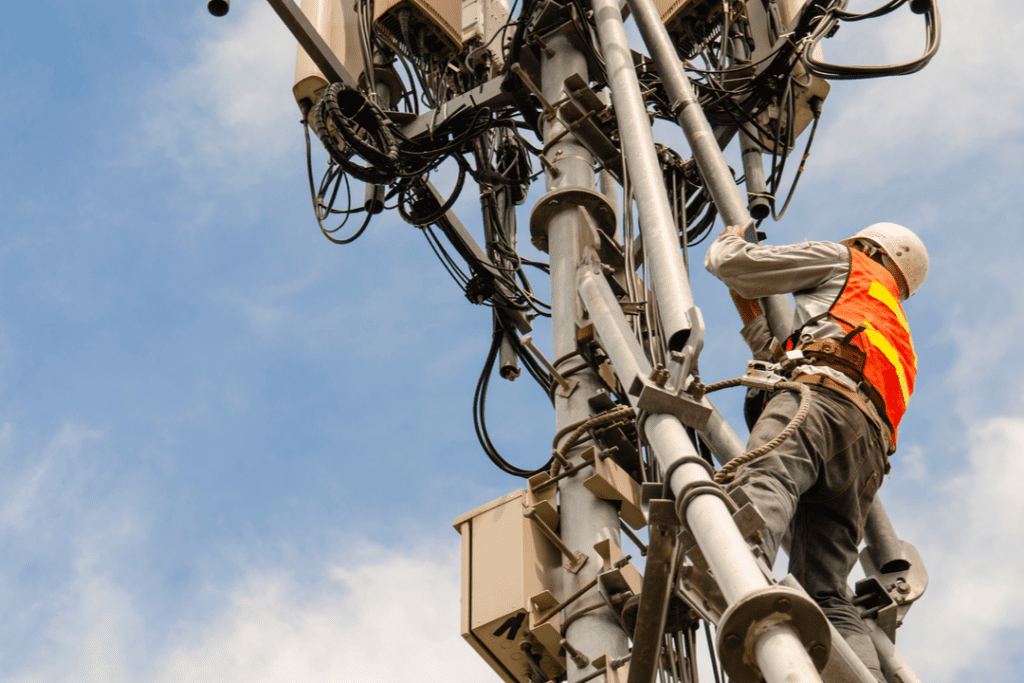
Long hours stuck in traffic. Endless drives to construction sites. Long, laborious hours installing new lines at remote utility service locations. While these typical stomping grounds of a telecom worker are fine and dandy, where’s one to take a whiz when needed?
Seems a bit dirty to admit, but indoor plumbing is a luxury everyone takes for granted. The tough reality of a telecom worker’s day-to-day life is that toilets are few and far between.
But did you know while an onsite porta-potty is the industry standard, those who pack portable toilets on the job are actually doing their employers (and the environment) a favor?
Here’s why.
Portable toilets are environmentally friendly
Yes, our dear Mother Earth. We often forget about her … sadly. But using portable toilets is very easy on her — once you crunch some numbers.
Your standard toilet takes 1.28 gallons per flush. Multiply that by the number of bathroom runs and number of employees, and you get a lot of excess water usage from people simply minding their business.
A wonderful thing about portable toilet systems is that they don’t take vast amounts of water to operate (or any at all!). Using them also ensures proper waste disposal.
Portable toilets save money and time
Have you ever stopped to think about all the time invested in multiple bathroom breaks? And how that poorly invested time is taking a chunk out of your bottom line? (This is especially true if reaching an acceptable toilet requires traveling.)
As we detailed in our blog The Real Cost of Employee Bathroom Breaks, if a worker had to make a bathroom run three times a day, that’s an hour per day. Per week, that’s five hours lost to restroom breaks. And if the average wage of a telecommunications technician is $22.95 per hour, you’re losing approximately $5,738 a year due to toilet visits (assuming your employees work 50 weeks a year) for just one employee.
When you consider the “rolling costs,” (using a company vehicle to travel to a bathroom, the gas used, the extra mileage that adds to maintenance costs, etc.), the hourly cost can easily jump to an average of $150/hour, or $37,500 a year. Now, multiply that by the number of employees working in remote locations.
(If these numbers make you wince, maybe don’t check Brief Relief’s savings calculator to see how portable toilets can not only boost your bottom line, but also employee productivity, worker morale, and business reputation.)
Portable toilets save your reputation
We’re sure you’ve heard of indecent exposure and know the risks of revealing one’s genitals under circumstances that are likely to offend others.
And public urination and defecation citations leave a lasting stain on a company’s image. (Defecation defamation, anyone? Not to mention a hefty fine for your company … Wanna be in charge of explaining that to your board this quarter? Didn’t think so.)
Don’t risk your employees getting caught on camera — or worse, blown up on social media. Look for a portable toilet solution that protects the environment, and your time, money and reputation.
In short, portable toilets like Brief Relief are a clear answer
When telecom utility workers are on-location and don’t have access to a running toilet, a privacy tent, portable commode, and waste bags are all they need when the urgency arises.
Introducing, Brief Relief!
The Brief Relief Lavatory System comes with a privacy shelter, commode, full-sized seat, and supply of Disposa-John waste bags. In other words, it’s a complete personal bathroom at any worksite.
How does it work? We’re glad you asked!
Once the privacy shelter is set up, the worker places the commode inside and lines it with a Disposa-John waste bag. In the act, the compounds inside the waste bag convert liquid and solid wastes into an odorless, deodorized gel. When done, one simply removes the waste bag and seals it closed.
And because Brief Relief waste bags are non-toxic and landfill-safe, you can throw them away in any regular trash can. Plus, they’re water-repellant, non-conductive, and fire retardant, meeting CPAI-84 standards.
Storage is effortless as well. Workers can set up the Brief Relief Lavatory System and fold it away in a carry case in a matter of minutes.
No more smelly porta-potties. No more hours of wasted time and money trying to get to and from the restroom sites. No more privacy issues. We’ve packed up all the common portable toilet problems and solved them with one solution: the Brief Relief Lavatory System. (You’re welcome!)
Sound like your cup of tea? To see the complete line of Brief Relief products for your workers, visit our shop.

Bathroom breaks. The dirty, little secret no one likes to talk about that’s costing companies LOADS of money.
Make a stink and require employees to punch out to use the restroom, and you could get a hefty fine. Do nothing about bathroom breaks, and you’ll silently rack up thousands upon thousands of dollars in lost time from your employees doing their doo…duty.
And don’t get us started on the hassle of fulfilling workplace sanitation requirements while making sure you don’t break indecent exposure laws.
It’s enough to give any company leader a headache. (Defecation defamation, anyone?)
To keep your workforce happy and reputation clean, you need to find a solution that solves the cost of bathroom breaks without sacrificing your employee performance and morale.
We have the perfect solution.
Let us break down the real cost of employee bathroom breaks and show you a way to improve the restroom experience no matter where your workers are.
Breaking Down the Cost of Bathroom Breaks
Imagine you manage the workforce of a communications technology company. Your workers climb hundreds of feet each day to inspect tower exteriors, repair equipment, collect data, and perform routine maintenance.
The only way up and down the tower is by a vertical metal ladder. And of course, there’s no porta-potty or bathroom in the tower.
When nature calls, workers have to descend to reach a porta-potty (or worse, a tree), take time to do their business, and then climb back up a few hundred feet to resume working.
A free climb can take 10 minutes. The descent can be quicker and take as little as five minutes, and the bathroom break another five to 10 minutes. To make numbers easy, let’s say that’s 20 minutes in total per bathroom break.
If a worker had to make a bathroom run three times a day, that’s an hour per day, or five hours per week lost to restroom breaks. And if the average wage of a telecommunications technician is $22.95 per hour, you’re losing approximately $5,738 a year due to toilet visits (assuming your employees work 50 weeks a year).
… And that’s just in employee wages.
You also have to consider the “rolling costs.” Do employees have to use a company vehicle to travel to a bathroom? How much gas is that using for every trip? How many extra miles is that putting on the vehicle adding to maintenance costs? When you consider all those related expenses, the hourly cost can easily jump to an average of $150/hour, or $37,500 a year!
So, how can you cut costs without soiling your company’s image? First, we’ll tell you how NOT to do it.
The Risks of Cutting Corners to Save Costs on Bathroom Breaks
There are a couple ways to cut corners on bathroom breaks, but both come with repercussions.
You Could Violate Workplace Sanitation Requirements
According to OSHA, employers must “avoid imposing unreasonable restrictions on restroom use.” Taking this into account, encouraging employees to speed things up when relieving themselves is an OSHA violation.
Limiting bathroom breaks – even if “inadvertently” due to extreme productivity quotas – could also lead to negative public backlash if word got out. (We all saw what happened with Amazon’s overworked delivery drivers.)
Your Employees Could Violate Indecent Exposure Laws
Asking workers to pop a squat 400 feet above the ground or doing so once they reach the worksite (if there’s no porta-potty) is a big no-no.
Not only are bathroom breaks meant to be private and mirror the same “at home” experience, but revealing one’s genitals under circumstances that are likely to offend others is considered indecent exposure. Indecent exposure is considered a misdemeanor in most states, and fined accordingly.
And aside from violating the law, you run the risk of someone seeing them pop a squat and complaining about it—or worse, blasting photos on social media. (And let’s not forget on-site security cameras, too.)
The Ultimate Bathroom Break Solution
No matter your employees’ work situation – atop a 30-story steel structure, in the remote wilderness, or stuck in a vehicle for hours on end – you need a bathroom break solution that’s private, safe, and compliant.
That’s why we developed the Brief Relief Liquid Waste Bag.
Our waste bags are spill-proof, compact, and convenient. They have a triple barrier to lock in waste, making them odorless and puncture-proof, and can be thrown away in a regular garbage bag.
Don’t have somewhere private where employees can use the waste bags? No problem!
Brief Relief’s Liquid Waste Bags can be easily paired with commode systems and portable shelters for ultimate privacy and comfort. From travel systems and curtains to canopies and private shelters, we can find the perfect solution for your specific bathroom break needs.
Check out Brief Relief’s savings calculator to see how our products can assist your organization in saving time and money while simultaneously increasing employee productivity, improving worker morale, and keeping your reputation clean.
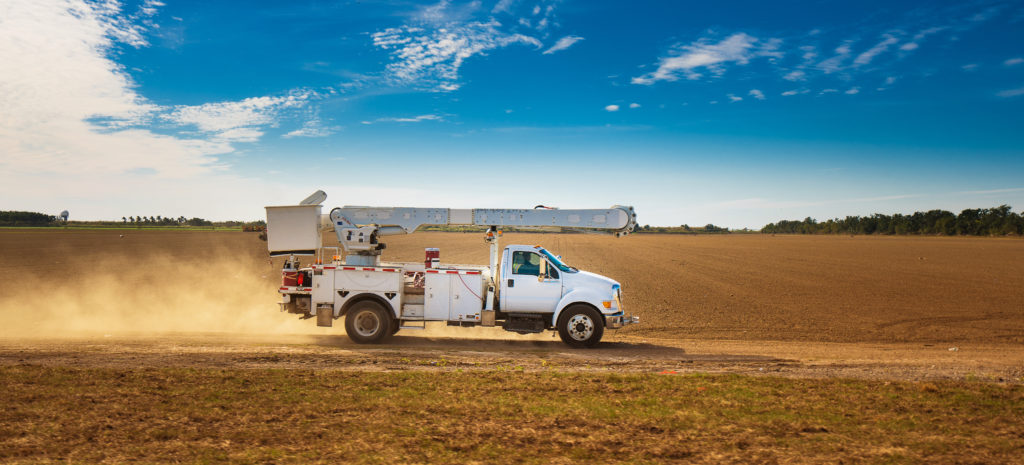
[vc_row][vc_column][vc_column_text]
When You Are on the Go
Due to long shifts and inaccessibility to consistent or private restrooms, bathroom breaks can become complicated. Unfortunately, Field Service Crews and long-distance drivers face this problem daily. Bin Door Buddy privacy curtain is great for utility and construction workers, first responders, and outdoor professionals who need a private area for an emergency restroom or changing.
Reliving yourself outside may not always be the best option, but sometimes it is the only option if you really have to go. Going outside without any kind of privacy can be embarrassing and attract unwanted attention from other travelers. This is where Bin Door Buddy comes in, providing a private area anytime, anywhere.[/vc_column_text][/vc_column][/vc_row][vc_row][vc_column][vc_row_inner][vc_column_inner width=”1/2″][vc_single_image image=”4938″ img_size=”large”][/vc_column_inner][vc_column_inner width=”1/2″][vc_column_text]
A Better Solution
Introducing Bin Door Buddy: a portable, multi-purpose privacy curtain that may be used alongside your truck’s bin door to create an instant private area. This product can be used in conjunction with Brief Relief Liquid Waste Bags, creating a convenient and trouble-free restroom on the go.[/vc_column_text][vc_column_text]Magnets are placed in each corner of the product for easy attachment to the side of your truck. If there are no magnetic surfaces available, Bin Door Buddy comes with grommets in the corners to hang by rope or bungee cord. It can also be folded up and stored in compact spaces, conveniently allowing it to fit in most SUVs, cars, and trucks.[/vc_column_text][vc_column_text]Made from high density opaque nylon, there is no need to worry about being seen by others. Bin Door Buddy is also durable and water resistant. Because of this, it can be easily sanitized and cleaned.[/vc_column_text][/vc_column_inner][/vc_row_inner][vc_column_text]
Why Bin Door Buddy?
When it comes to portable, sanitary privacy shields, there is no other product on the market like the Bin Door Buddy. No longer will you have to deal with hiding behind the car door or a makeshift cover when nature calls, hoping you’re not in full view to the public. No matter where or when, the Bin Door Buddy is ready when you are![/vc_column_text][/vc_column][/vc_row]
[vc_row][vc_column][vc_column_text]Each year, tropical storm systems and hurricanes leave homeowners and their families struggling for basic necessities. As a first responder or on-call emergency restoration specialist, being equipped with the right tools is critical to keep you, your team, and those being rescued. However, there is one thing that is overlooked. If you have to go to the bathroom, where do you go? If plumbing is out and people’s homes are flooded, you are left in a tricky situation. This is where Brief Relief products can help you and those effected by the storm!
Staying Prepared with Brief Relief
During periods of utility damage or plumbing inoperability, providing customers with a portable restroom supports greater health, comfort, and peace of mind. With portable commodes, waste bags, privacy curtains, and more, Brief Relief products are ideal for hurricane preparedness and confer three key advantages, including:[/vc_column_text][vc_column_text]
1. Health & Sanitation
Whether your clients secured their plumbing systems in preparation for the storm or do not have accessible bathrooms in the hurricane’s aftermath, Brief Relief’s waste bags alleviate the risk of spreading contaminants, viruses, bacteria, and potential disease.
2. Comfort & Privacy
In the wake of a storm, temporary public restroom stations and trailers are oftentimes provided to service the community. At the same time, these solutions can be cumbersome to access, unsanitary, or unavailable before or during the storm. Brief Relief’s commode systems and privacy curtain, the Bin Door Buddy, create sanitary portable bathrooms where and when your team need it most.
3. Easy Storage
When customers allow waste to accumulate in an inoperable household toilet or bucket, the conditions quickly become nauseating and unsanitary. Both our liquid and solid waste bags are puncture proof, odorless, and compact. They can be stored somewhere until you find a safe place to dispose of them, keeping you, your staff, and others safe from bacteria.[/vc_column_text][vc_column_text]
Be Prepared and Stay Prepared
Brief Relief portable lavatory systems are a safe, convenient, and sanitary way to keep first responders prepared for a post tropical storm, hurricane, or disaster scene. In addition, it’s a great supply to have in your family’s personal hurricane preparedness kit. Each travel toilet, waste bag, and restroom kit is a key addition to any disaster kit.[/vc_column_text][/vc_column][/vc_row]
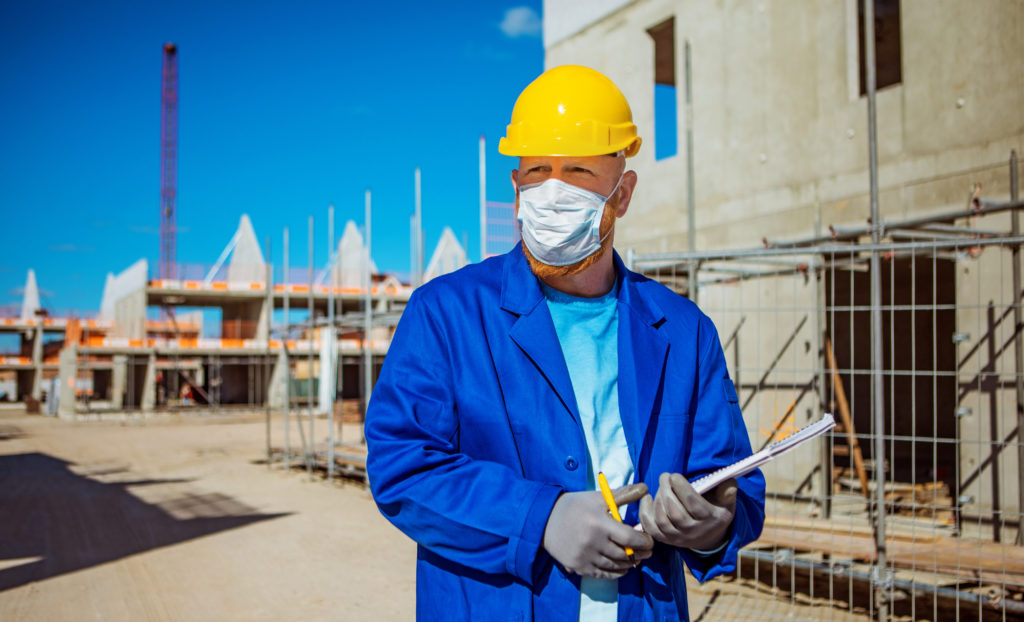
[vc_row][vc_column][vc_column_text]
2020 Double Whammy
As temperatures drop, COVID-19 and flu cases push the limits of what our healthcare system can handle. We do not yet know how influenza (the seasonal flu) and COVID-19 will interact with each other. The best thing you can do is create a work environment that spreads neither.
Good News? The same proactive steps that prevent COVID-19 from spreading also prevent influenza from spreading. That means that if you already have precautions in place, you will see fewer occurrences of both viruses.
Bad News? Not everyone is following the CDC guidelines.
What can you do as a team leader and business owner in your community? You can help prevent the spread of airborne germs in the workplace.
There is more, though. Leadership isn’t just about providing equipment to your employees and expecting them to use it. It is also about setting the expectation that they follow through to keep their fellow employees and customers safe.[/vc_column_text][vc_column_text]
Encourage Hand Washing
Both COVID-19 and the flu last longer on surfaces under colder temperatures. Hands touching things can quickly become a danger to your employees and customers.
So how do you the community that you’re taking this seriously? First, have hand sanitizer visible. Placing hand sanitizer stations by the entrance will set the expectation that it should be used. Placing bottles outside restrooms and, if applicable, at the register will also help remind customers that it is not just themselves that they are put at risk.
Another suggestion is to put 20 seconds of a song’s lyrics, laminated, above the sinks in your restrooms. Encourage people to sing it while scrubbing[/vc_column_text][vc_column_text]
Provide Face Shields
If your staff work in pairs outside, it doesn’t matter how many times you tell them not to share tools…they are going to share tools.
If you are a first responder, you will come into close contact with other people. The size of the group doesn’t matter. If you work in a restaurant, there is no working from home.
So what are you going to do to protect your team? Face masks are great for preventing YOU from spreading viruses to other people.
Face shields protect you from other people who cannot bring themselves to:
- Wash their hands
- Cover their mouths when sneezing or coughing
- Stay away from large groups of people
Your business needs to stay open; your employees have to be onsite for you to operate. Do the best you can for your employees and get them to face shields to protect them from the Flu and COVID-19.
Brief Relief Face Shields add a better layer of protection for your employees. Some of the features include:
- Shield tilts for versatile use
- Adjustable strap
- Lightweight
- Comfortable to wear for long periods
- Covers your entire face
- Soft foam padding provides additional ventilation and reduces fogging
- Reusable
- Made from durable PETG, which is mentioned as one of the best materials for face shields by the FDA
By following these guidelines and safety measures, employees and staff will have the highest set of standards and criteria to prevent germs in the workplace.
[/vc_column_text][/vc_column][/vc_row]

